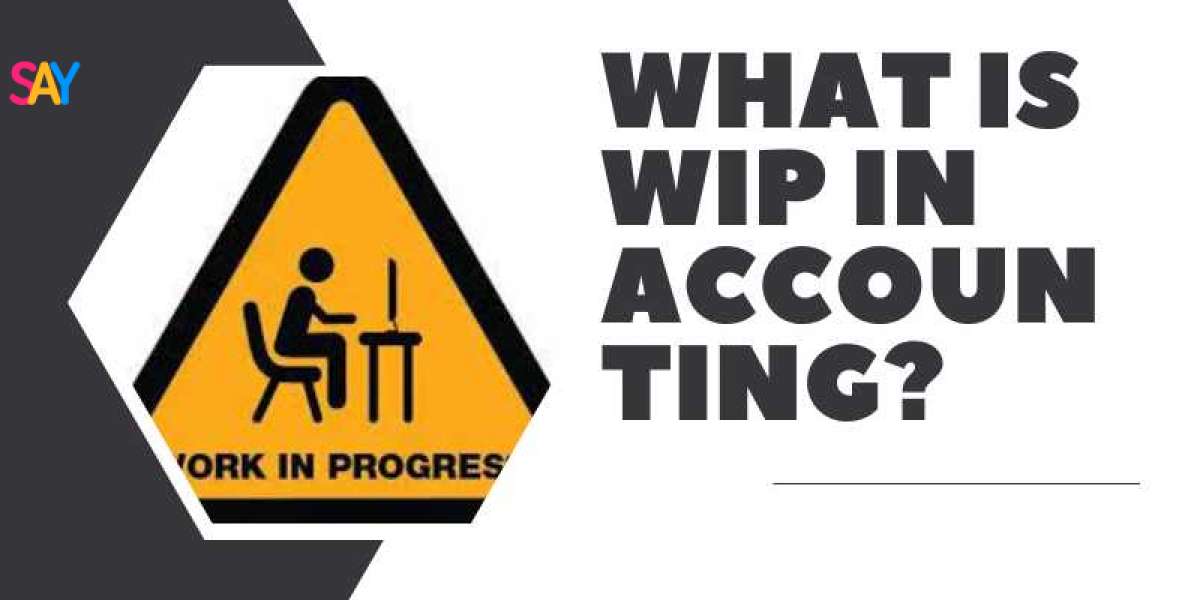In accounting, "WIP" stands for "Work in Progress." It represents the value of goods and services that are in the process of being produced or delivered but are not yet completed. WIP is typically found on a company's balance sheet as an asset.
WIP is important for businesses that engage in projects, manufacturing, construction, or any process that involves multiple stages before a final product or service is delivered to the customer. It helps companies track the value of unfinished work, which can include:
Partially completed products.
Incomplete projects.
Services that are in progress.
Raw materials and labor costs incurred but not yet transferred to finished goods or services.
By tracking WIP, a company can assess the cost of completing these projects or producing these goods and allocate costs accurately to determine the profitability of each project or product. This is particularly important for job costing and determining the financial health of a business involved in long-term projects or complex production processes. Once the work is completed, the WIP is transferred to finished goods or services, and the associated costs are recognized in the income statement as expenses or cost of goods sold.
How to WIP Work?
Work in Progress" (WIP) is a term commonly used in project management and manufacturing to track and manage the status of ongoing tasks or projects. WIP represents tasks that are not yet completed but are actively being worked on. Here are some steps on
how to manage and work with WIP effectively:
Define WIP Limits:
Determine the maximum number of tasks or projects that can be in progress at any given time. This limit helps prevent overloading your team and ensures that work is completed more efficiently.
Prioritize Work:
Before starting a new task, prioritize it based on its importance and urgency. Consider using tools like the Eisenhower Matrix (urgent/important) to help you prioritize effectively.
Visualize WIP:
Use visual management tools like Kanban boards or digital project management software to create a visual representation of your WIP. This helps everyone on the team see what's in progress, what's completed, and what needs attention.
Limit Multitasking:
Encourage team members to focus on completing one task at a time. Multitasking can reduce efficiency and lead to unfinished work.
Track Progress:
Continuously update the status of tasks in your WIP. This could be as simple as moving a task card on a Kanban board from "In Progress" to "Completed." Regularly update your team on progress.
Communicate:
Maintain clear communication within your team. Discuss any obstacles or challenges that might be impeding progress. Transparency is key to resolving issues promptly.
Review and Retrospect:
Periodically review your WIP to identify bottlenecks or tasks that are taking longer than expected. Conduct retrospectives to learn from past work and improve your processes.
Use Agile Methodologies:
If you're managing software development or similar projects, consider adopting Agile methodologies like Scrum or Kanban. These methodologies provide frameworks for managing and improving WIP effectively.
Time Management:
Encourage good time management practices among team members. Tools like time-tracking apps can help individuals understand how they allocate their time.
Continuous Improvement:
Always seek ways to improve your workflow and WIP management processes. Listen to feedback from your team and adjust your methods accordingly.
Respect WIP Limits:
Stick to the defined WIP limits. If you reach the limit for a particular stage, don't start new tasks until some are completed or moved to the next stage.
Celebrate Successes:
When tasks or projects are completed, celebrate the achievements with your team. This can boost morale and motivation.
Remember that the specific approach to managing WIP can vary depending on the nature of your work and the tools and processes you have in place. It's essential to adapt these principles to your specific context and continuously refine your WIP management practices for optimal productivity and efficiency.
In conclusion, Work in Progress (WIP) accounting is a critical aspect of financial management for companies involved in projects or manufacturing. Properly accounting for WIP allows businesses to maintain accurate financial records, make informed decisions, and ensure transparency for stakeholders. It's an ongoing process that requires attention to detail and adherence to accounting standards and regulations








